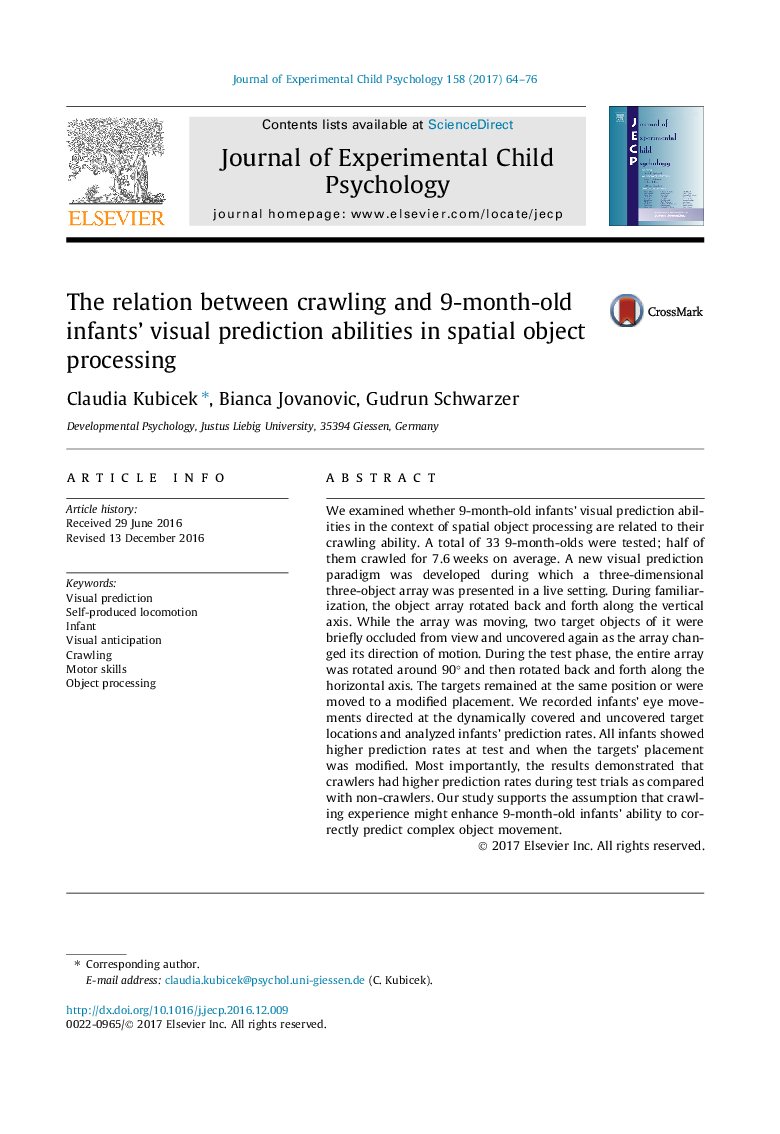| Article ID | Journal | Published Year | Pages | File Type |
|---|---|---|---|---|
| 5040020 | Journal of Experimental Child Psychology | 2017 | 13 Pages |
Abstract
We examined whether 9-month-old infants' visual prediction abilities in the context of spatial object processing are related to their crawling ability. A total of 33 9-month-olds were tested; half of them crawled for 7.6 weeks on average. A new visual prediction paradigm was developed during which a three-dimensional three-object array was presented in a live setting. During familiarization, the object array rotated back and forth along the vertical axis. While the array was moving, two target objects of it were briefly occluded from view and uncovered again as the array changed its direction of motion. During the test phase, the entire array was rotated around 90° and then rotated back and forth along the horizontal axis. The targets remained at the same position or were moved to a modified placement. We recorded infants' eye movements directed at the dynamically covered and uncovered target locations and analyzed infants' prediction rates. All infants showed higher prediction rates at test and when the targets' placement was modified. Most importantly, the results demonstrated that crawlers had higher prediction rates during test trials as compared with non-crawlers. Our study supports the assumption that crawling experience might enhance 9-month-old infants' ability to correctly predict complex object movement.
Related Topics
Social Sciences and Humanities
Psychology
Developmental and Educational Psychology
Authors
Claudia Kubicek, Bianca Jovanovic, Gudrun Schwarzer,
